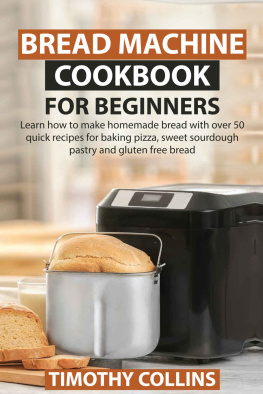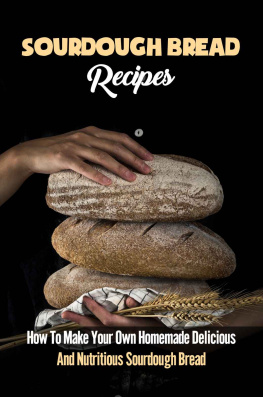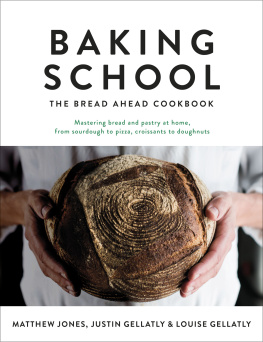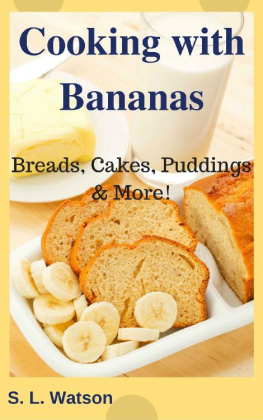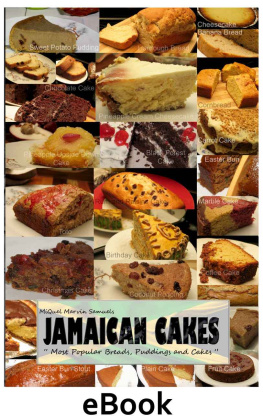CONTENTS
INTRODUCTION
Baking has always been part of my life. My mother used to bake bread most days when we were children, and even at my first job at Crowthers, a family-run restaurant in East Sheen, London, where I began by washing dishes, I would help to bake the bread until I moved on to do cooking and pastry.
I met my wife, Louise, when I was sixteen at Hounslow catering college. We were in the same class, and one of the many reasons we are still happy together after twenty-four years is that we both understand the demands of a life as a chef or baker.
After Crowthers I worked in many other restaurants: in Cheshire at the Rookery Hall, in Maine, USA, where I cooked up a storm on Little Cranberry Island, and at the Greenhouse in Mayfair, London, to name but a few.
But it was only when I joined Fergus Henderson at St John Restaurant that I really fell in love with baking. Even in my early days as a chef, I always liked cooking nose to tail, so when an opportunity came along to work at St John I dived in. Those were the most amazing thirteen years: I found my calling in pastry and baking in the first few months.
One of the turning points was when I did my first bake at St John and took my first loaf of bread out of the oven. The bread and the crackling of the crust just didnt stop singing to me. I hung up my chef apron and put on a bakers one, and never looked back.
I owe Fergus Henderson and his partner and co-founder of St John, Trevor Gulliver, so much. There were many joyous occasions at St John, but one of my proudest was receiving our first Michelin star when I was Head Baker and Pastry Chef.
A few months after leaving St John, a fellow baker, Matt Jones, called me and told me he had found a site for a bakery in Borough Market and asked whether I would be interested in coming on board. I said hell, yeah and we opened Bread Ahead in the summer of 2013.
Bread Ahead stands for British baking; we bake our bread using British wheat but use lots of sourdough and long fermentation. We bake early in the morning and throughout the day (so no more night shifts) and we have large windows at the front of the bakery so people can come and watch us working our magic, but also we get to see daylight happy days.
We are opening a bakery school alongside the bakery, teaching people how to make bread, cakes and, of course, doughnuts but I hope that you can learn the ropes through experimenting with the recipes in this book.
I have worked in every section in a kitchen, from kitchen porter to head chef, and Ive found the bakers life the hardest but its a passion and I love it, and its become a way of life.
THOSE DOUGHNUTS
A bakers life isnt all bread. I started making my doughnuts in 2003 when St John Bread & Wine opened, but I had many teething issues with getting the recipe right, from the sweetness of the dough to the length of the proving and cooking times, and even the yeast amounts. Yes, we did have exploding doughnuts. After many trials, I got there, and I think they are perfect. Ive made them for a prestigious lunch for the worlds fifty best restaurants and I even took my fryer to Glastonbury in 2013 where I rocked at the Beat Hotel, frying doughnuts until the early morning, and launched my violet custard doughnut with sugared violets and Parma violet sprinkle. So turn to and you can enjoy all my hard work and make the perfect doughnuts too.
BEFORE YOU BEGIN
Every recipe in this book has been carefully tested and timed, so you can easily see at a glance how much time you will need to prepare and make or bake it. If you want to make my sourdough, for example, you will need to start your mother a week in advance.
It may sound like obvious advice, but read through the recipe carefully before you begin. Its important to make sure you have all the necessary ingredients and the right equipment (baking is an exact science, and even if you follow a recipe exactly, if you use a 28cm cake tin when the recipe has been designed for a 23cm tin, then you are not going to get the right results).
Finally, quite a few of the recipes in the book call for things from the Store Cupboard chapter , whether its jam, chocolate sauce or butterscotch, so check what you need before you begin and stock up your cupboard.
RECIPE LIST
BREAKFAST
They say breakfast is the most important meal of the day, but, as a baker, when most people are having their breakfast I am usually tucking into my dinner with a glass of wine.
Breakfast happens at very different times: when working through the night, breakfast could be at 10 p.m. (thats when Williams spud fry is perfect), but most of the time its bread or toast or granola the clusters are brilliant for when youre on the go, as are the flapjack bars.
If you ever need to score a few brownie points, pull out the full Monty souffls and serve them in bed with some bubbles.
I also love to go out for breakfast at good restaurants in town (London), like Quo Vadis, One Leicester Street, Smiths of Smithfield and, for the best bacon sandwich, St John Bread & Wine you get to have a bit of glamour without breaking the bank.
BREAKFAST BUN SCROLLS
I developed these buns for the St John Hotel breakfast menu, as we wanted something different from the normal pastry offerings. These amazing buns are a cross between the softest buttery bun and pastry.
Makes about 20
Suitable for freezing (cooked, or rolled raw, or sliced)
Preparation time: 50 minutes
Proving/resting time: 8 hours and/or overnight
Cooking time: 20 minutes
500g strong white bread flour, plus extra for dusting
10g fine sea salt
10g fresh yeast, crumbled
350ml full fat milk
250g unsalted butter
1 egg, beaten, to glaze
Put the flour and salt into a bowl and mix together. Whisk the yeast into the milk, then add to the flour and mix together for only a couple of minutes. Scrape out of the bowl on to a lightly floured surface and form into a ball, then wrap it in clingfilm and put into the fridge for 2 hours to rest.
Take the butter out of the fridge, followed about 15 minutes later by the dough. Let them both come to room temperature (they need to be the same).
On a lightly floured surface, start rolling the dough lengthways until you have a long, even, rectangular strip about 70cm long and 24cm wide. Brush off any excess flour and make sure all the sides and corners are straight and even.
With one of the shorter sides of the rectangle facing you, place the butter in small knobs evenly all over the top two-thirds of the dough. Fold the bottom (unbuttered) third into the middle, then flip the folded two-thirds on to the buttered third to cover it. This is your first turn.


